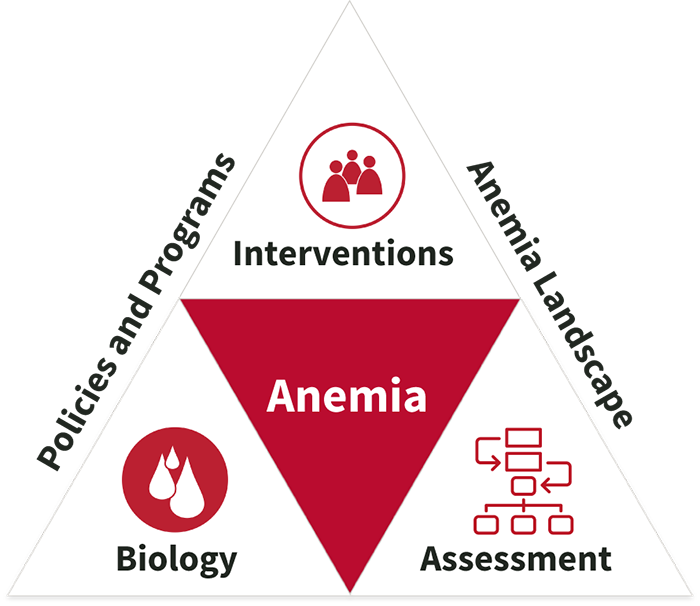Anemia is a public health concern disproportionately affecting young children, pregnant women, and women of reproductive age. The Global Burden of Disease Study estimates that iron deficiency anemia and thalassemia are the leading anemia causes worldwide.
While anemia is prevalent around the world, the underlying causes differ among different populations and regions. A “one size fits all” approach does not exist, and implementation of strategies to reduce anemia depend on the main causes of anemia, and the financial and technical capacity of each country.
We found 93 resource(s)
Combined IYCF with Small-Quantity Lipid-Based Nutrient Supplementation is Associated with a Reduction in Anemia but No Changes in Anthropometric Status of Young Children from Katanga Province of the DRC: A Quasi-Experimental Effectiveness Study
Journal Article published by Am J Clin Nutr in
This study evaluates the impact of an infant and young child feeding intervention (with small-quantity lipid-based nutrient supplements) on anemia and growth in children aged 6–18 months in the Democratic Republic of Congo.
Development and Rollout of National Maternal Anemia Materials: Experience from Mozambique
Brief published by Maternal and Child Survival Program in
This brief describes the Maternal and Child Survival Program's experience in partnering with Mozambique's Ministry of Health in developing national anemia behavior change communication materials, and using them in the health system.
Anemia in Bolivian Children: A Comparative Analysis Among Three Regions of Different Altitudes
Journal Article published by Ann N Y Acad Sci in
This paper analyzes four population-based demographic and health surveys conducted in Bolivia between 1998 and 2016 to understand trends in anemia in children from 6 to 59 months of age by selected sociodemographic characteristics and three categories of altitude: low, medium, and high.
Development and Rollout of National Maternal Anemia Materials: Experience from Mozambique
Information, Education and Communication Materials published by Maternal and Child Survival Program in
This case study describes the process of development of social and behavior change resources for the program to to reduce iron deficiency anemia in women in Mozambique
Understanding the Process of Strengthening Multi-Sectoral Efforts for Anemia Reduction: Qualitative Findings from Sierra Leone and Uganda
Journal Article published by Int J Health Plann Manage in
This paper presents key findings and lessons learned from Sierra Leone and Uganda's experiences establishing national-level anemia coordination platforms
Multi-Sectoral Anemia Efforts at the National Level in Uganda
Technical Report published by SPRING in
This process documentation identifies the successes and challenges of establishing a multi-sectoral anemia platform in Uganda, analyzes the key factors that led to outcomes, and identifies potential areas for making improvements to the process in terms of sustainability of efforts. This process documentation uses data from two rounds of semi-…
Malaria Control Interventions Contributed to Declines in Malaria Parasitemia, Severe Anemia, and All-Cause Mortality in Children Less Than 5 Years of Age in Malawi, 2000-2010
Journal Article published by American Journal of Tropical Medicine and Hygiene in
This study evaluates the impact of malaria control efforts on malaria morbidity and all-cause childhood mortality in Malawi between 2000 and 2010.
How Non Consumers Differ from Consumers: A Qualitative Approach to Synthesize the Attributes of Iron Folic Acid End Users
Journal Article published by Journal of Clinical and Diagnostic Research in
This study explores the manifold aspects related to anemia and iron–folic acid supplementation with special emphasis on contributory factors behind low levels of iron–folic acid consumption at the consumer end. The authors identify an informational gap as the fundamental factor contributing to suboptimal iron–folic acid consumption.



